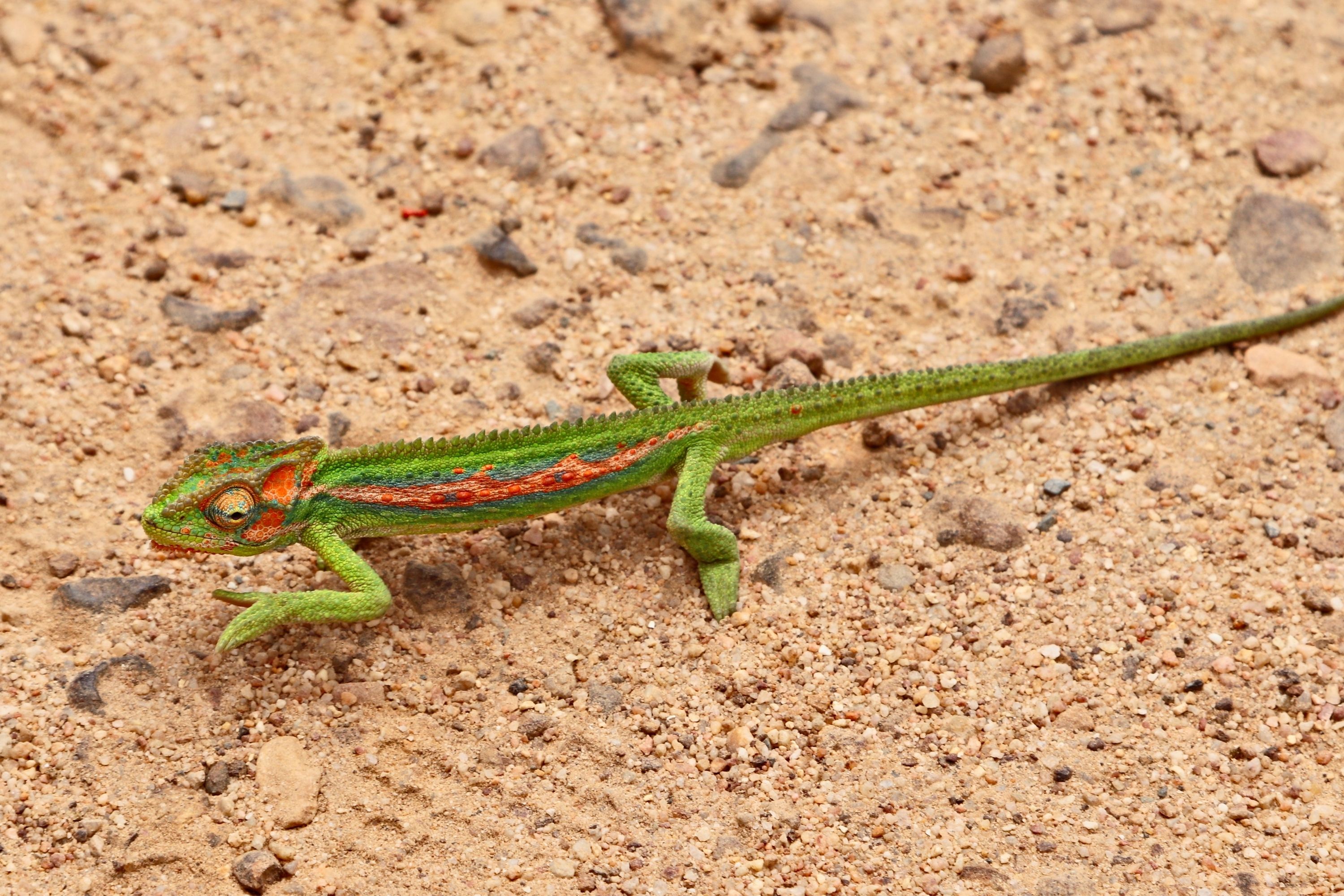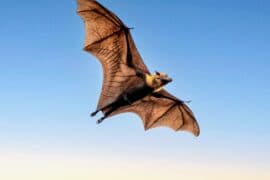Cape dwarf chameleon
(Bradypodion pumilum)

Description
The Cape dwarf chameleon (Bradypodion pumilum) is a chameleon native to the South African province of the Western Cape, where it is restricted to the region around Cape Town. As with most chameleons, its tongue is twice the length of its body and it can be shot out of its mouth using a special muscle in the jaw. This gives the chameleon the ability to catch insects some distance away. The Cape dwarf chameleon grows to over 15 cm (5.9 in) in length, including the tail, with males and females reaching similar adult sizes. They are ovoviviparous, but examination in controlled captivity has shown the very soft egg-like membrane around the young is discarded immediately on birth. The young resemble miniature versions of the adults, with muted colours, and typically reach no more than 2 cm in length at birth. Adults can vary quite significantly in colour variety, saturation and pattern, some appearing much more vibrant than others. Like most chameleons, the tail is prehensile, and the feet are well evolved to grasping twigs, with minute claws on the end that improve grip. Normally very slow moving, chameleons have a characteristic shake, which may make them look more like leaves to prey and predators. When provoked, they can speed up to several centimetres a second. When further provoked, they may inflate themselves, hiss, change colour dramatically, and bite. They do not have sharp teeth, so their bites rarely inflict more than a slight pinch. Male and female are difficult to differentiate. However males tend to have brighter colours, slightly larger head crests, and slightly narrower stomach area around the hips. The Cape Dwarf Chameleon is classified as a medium-sized chameleon with an average adult body size of 50–70 mm body size. This species has a restricted distribution within regions of southwestern South Africa that receive rainfall during winter months. This species is viviparous, meaning it gives live birth rather than eggs, and can have one to several clutches of about 10-15 offspring in any given year. Mortality rates of neonates are expected to be high due to an intense reproduction schedule and a high fecundity rate. In the past, most South African dwarf chameleons were considered a subspecies of the Cape species. This is now known to be wrong, however; B. pumilum does not appear to have any particularly close living relatives.
Taxonomic tree:







